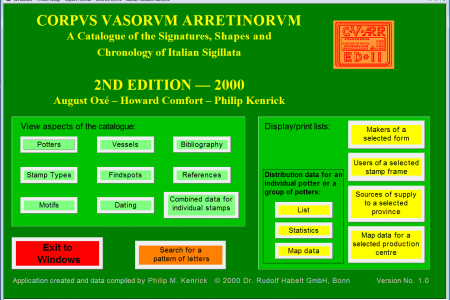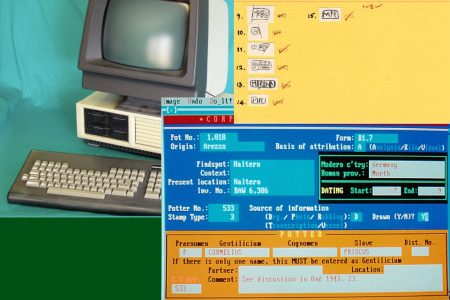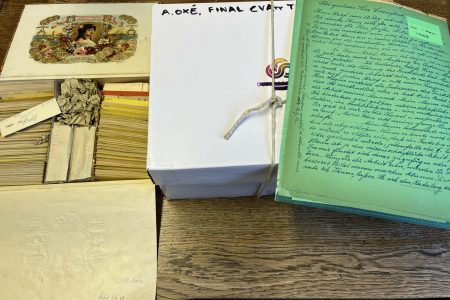
ock.dainst.org: the online database of the Corpus Vasorum Arretinorum
by Katja Rösler
Since the end of January 2024, the enhanced database of the Corpus Vasorum Arretinorum, which is used to study and identify potter’s names and stamps on Roman terra sigillata, is accessible online at ock.dainst.org. The database published on CD in 2000, which was included with the catalogue also known by the author acronym OCK (Oxé/Comfort/Kenrick 2000), is no longer readable with today’s computer operating systems (Fig. 1). Therefore, on the initiative of Gabriele Rasbach and in close cooperation with the author Philip Kenrick, Frederic Auth, Katja Rösler and Wenke Domscheit in 2020 began to transfer the data into a modern database management system, which was further developed into an online database in 2023. This work was carried out as part of the DAI sub-project „Normativ Data for Objects in Archaeology“ led by Kerstin P. Hofmann. We would like to take this opportunity to thank her for her support.

This required the correct transfer of around 150.000 data entries, including data from 860 sites, 2584 potters and a good 36.200 stamps on almost 36.000 vessels. In addition, there are approx. 52.000 references to 844 literature citations. We also digitised the catalogue images of around 11.300 stamp types and converted them into freely scalable individual images. We were also able to expand the holdings of the DAI platforms idai.bibliography/zenon and idai.gazetteer with around 100 new entries each. We would like to thank the many people who were involved in this work.
The online database ock.dainst.org was launched as part of an evening lecture on 28 January 2024. Philip Kenrick took the audience on a vivid journey „Down Memory Lane“ (Fig. 2) and traced the varied history of storage media for information on ceramic stamps: from index cards, notebooks and tables to the beginnings of the use of hardware and software. The event ended with an introduction to the online database by Frederic Auth.

We are especially delighted that Philip Kenrick has entrusted the RGK archive with the original documents of the authors of the first edition of the Corpus Vasorum Arretinorum (Oxé/Comfort 1968): In addition to a cigar box from August Oxé (1836–1944) containing index cards with potter’s stamps (Fig. 3 left) and Oxé’s original manuscript (Fig. 3 centre), which he was no longer able to publish himself, the correspondence between Howard Comfort (1904-1993) and the Oxé family is now also in the RGK archive (Fig. 3 right). Comfort was ultimately able to publish Oxé’s manuscript in 1968. Philip Kenrick has summarised the winding paths of this first edition of the corpus in a recently published article in Berichte RGK 101/102 (2023).

